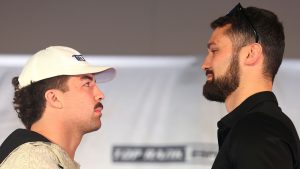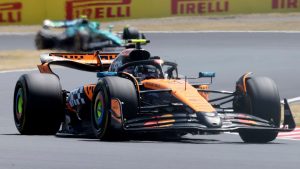Helmet tour: Seeking safest possible head protection


DES PLAINES, Ill. (AP) — There probably never will be a perfect football helmet. That doesn’t mean manufacturers won’t chase that goal.
A tour of the Riddell headquarters makes that absolutely clear. Innovation, imagination, analytics, all with advancements in the product and enhancements of player safety as the objective.
Those advancements have occurred in this century at varied paces. Some improvements have developed over a period of years, while others — particularly nowadays with so many steps forward in technology and analytics — happened rapidly and will continue to do so.
Riddell is among four manufacturers who have received high marks in the NFL/NFLPA annual rankings, which are revealed publicly, and a poster of the ratings is placed at every team facility. VICIS, Schutt and Xenith also scored well.
“Our success in the ratings or the NFL poster and at Virginia Tech’s testing shows our desire to improve safety,” says Thad Ide, Riddell’s senior vice president of research and product development. “I think the level of player safety is changing for the better with information from the NFL and developments as a manufacturer.”
Those developments have included Riddell partnering with digital manufacturing company Carbon to combine such additive manufacturing and production on a mass scale. By combining Carbon’s digital light synthesis technology, advanced software design tools and some innovative materials, Riddell’s new SpeedFlex Precision Diamond helmet hit the market as the third-highest ranked item on the NFL/union poster. It features Precision-Fit technology, which uses 3-D scans of players’ heads to create helmet liners that precisely fit each athlete’s head size and shape.
It’s what Riddell calls “next-gen head protection,” a description that also can be applied to the VICIS Zero 1, the Schutt F7 LTD, and the Xenith Shadow among other top-rated helmets. These represent the latest step in the search for the safest head gear on every level: professional, college, high school and youth.
One innovation, Riddell’s InSite impact monitoring system, “brings a new perspective to the game that is different than just having a helmet that tests well,” Ide says. “We seek a more holistic approach.”
That is evident simply from witnessing presentations of the InSite Training Tool, which collects and analyzes an impact profile for each player in order to identify training opportunities that could decrease impact exposures.
Riddell’s innovation lab features a series of impact tests for helmets. In one test, a helmet is struck at a variety of locations and from different directions and with varying intensities — the kind of hit that occurs so often and, many times, without warning on the field — to test rotational and linear forces that might lead to injury. In another test, the helmet is dropped from higher than five feet to test the reduction of impact force from different locations on the helmet. Results are judged on a pass/fail basis.
The Precision-Fit process — though the helmet wasn’t available yet when he played, Peyton Manning was heavily involved in it as an adviser and still is — has led to 630 NFL players wearing them in their second year of eligibility. All 32 teams are using them, Ide says, and Riddell notes that its SpeedFlex Precision model was worn by more players last season than all other manufacturers’ models combined.
“That far outstripped our expectations,” he says. “It’s not often a helmet is adopted that quickly.”
Riddell also does extensive reconditioning of helmets from all football levels. That can range from cleanups and sanitizing to repairs, recertification, or even replacements.
On the college level, Riddell used its “InSite” system with an unidentified FBS school to compile extensive data on all impacts in every practice session and game for every player. The info gathered indicated such things as which drills have the most and least number of head impacts; which days the overall practices were most and least effective; and which specific players needed extra monitoring during each drill.
That sort of comprehensive data can upgrade preseason, in-season and postseason scheduling plans on a player safety scale, as well as on a performance level. It is being used by more than 800 programs and 30,000 athletes across youth, high school and college football.
“We can pinpoint position groups and then individuals to see who did what, or does a drill still work,” says Matt Shimshock, Riddell’s lead support coordinator for smart helmet technologies. “We’ve measured 5 million impacts. This is plug-and-play data.”
And it’s just really the beginning of the next step in the quest to develop the safest helmets possible.
“Advances are happening on many levels,” Ide notes. “We want people to know about all of them.”







